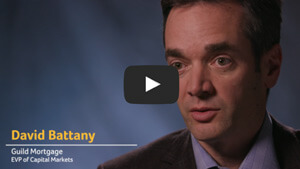Inflation Nearly in the Rearview
Have you heard? Inflation was so 2022. All jokes aside, after we learned last week that U.S. inflation cooled for the sixth consecutive month (the consumer price index dropped 0.1% in December compared to the month prior), expectations are now that the Federal Reserve is likely to downshift rate hikes to 25 BPS going forward, beginning at next month’s FOMC meeting.
That narrative was corroborated this week when we learned that inflation at the wholesale level fell 0.5% month-over-month according to the Producer Price Index, driven primarily by a decrease in energy prices. Overall, it does look like inflation is on the way down via the benefit of the Chinese economy slowing down and oil prices dropping a bit, but as far as the Fed is concerned, it wants to see the labor market come more in balance.
A Shifting Fed Narrative
The Fed has prioritized transparency to reduce market volatility and voting FOMC members have been openly insisting that the central bank will not cut this year and that its terminal rate will be above 5%. Investors simply don’t believe it. That disconnect between the Fed and investors over what future policy will look like has been driving markets. Keep in mind that as long as the labor market remains tight (Initial Jobless Claims fell to 190,000 last week, the lowest level since the late 1960s when we had a military draft), the Fed has additional runway to remain hawkish.
For those hoping to see rates continue to fall, having already fallen more than 1% compared to October of last year, recent dovishness from the Fed has been welcomed. Earlier this week, Fed Vice Chair (FOMC voter) Brainard said that policy is now in restrictive territory and Philadelphia Fed President (FOMC voter) Harker said that he doesn’t see a current need for “overly restrictive” policy from the Fed. Boston Fed President (FOMC Voter) Logan suggested he thinks it is now prudent to moderate the pace of increases
Home affordability dropped to its lowest level since 1986 this past October, spurred by high home prices and mortgage rates.
The more mortgage rates drop, the more that helps home affordability. Homebuilders cutting prices, as we have seen of late, is also good news for affordability. But with buyer demand still out there, more housing supply hitting the market is the obvious solution. Unfortunately, housing starts fell in December for the fourth consecutive month and are down 3% year-over-year. Notable to mortgage investors, single-family home starts are down 10.6% compared to 2021. Materials and supplies for residential home construction are 38% higher since QE4 began in March of 2020.
The Dark Side of Lower Rates
We’ll all obviously be thrilled when rates drop and create both purchase loan demand and meaningful universe of refinance candidates one of these days, but are you prepared for the dark side of falling rates? I’m talking about margin calls and early payoffs. Often, secondary marketing gains happen after your short hedge positions go bad, so start planning ahead now. We recommend a frequent liquidity check and constant updates to your assumptions and models.



